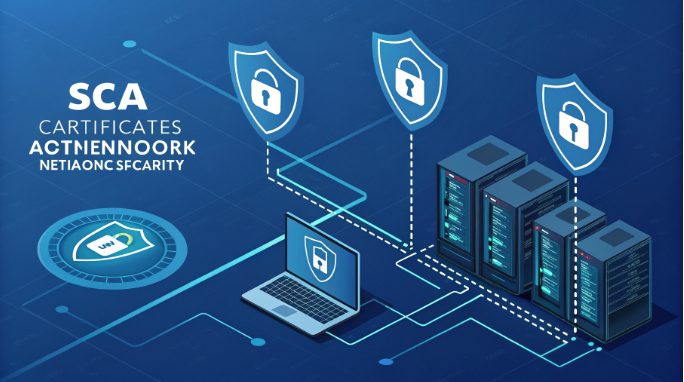The Importance of SSL CA Certificates in Network Security

In the rapidly evolving landscape of cybersecurity, SSL CA certificates have become indispensable for Hong Kong hosting providers and system administrators. With cyber threats becoming increasingly sophisticated and data breaches making headlines globally, the implementation of robust SSL security measures is no longer optional but a critical necessity. This technical guide explores the intricate mechanisms of SSL certificates, their implementation challenges, and specific considerations for securing servers in Hong Kong’s dynamic digital environment.
Technical Foundation: Understanding SSL CA Infrastructure
At its core, SSL (Secure Sockets Layer) and its successor TLS (Transport Layer Security) utilize asymmetric cryptography to establish secure communications between servers and clients. The Certificate Authority (CA) infrastructure operates on a trust chain model, where root certificates validate intermediate certificates, which in turn authenticate end-entity certificates. This hierarchical system forms the backbone of modern web security protocols.
The PKI (Public Key Infrastructure) that underlies SSL certificates involves several critical components:
– Root Certificate Authorities: The trusted anchors of the entire system
– Intermediate CAs: Bridges between root CAs and end-entity certificates
– Registration Authorities: Entities responsible for identity verification
– Certificate Revocation Systems: Including CRL and OCSP mechanisms
– Trust Stores: Repositories of trusted root certificates
Certificate Types and Technical Implementations
Understanding the technical distinctions between certificate types is crucial for Hong Kong hosting environments. Each certificate type serves specific use cases:
DV (Domain Validation) Certificates:
– Validation Process: Automated domain ownership verification
– Implementation Time: Minutes to hours
– Technical Requirements: Basic DNS or HTTP challenge response
– Use Cases: Personal blogs, small business websites
– Security Level: Standard encryption, no organization validation
OV (Organization Validation) Certificates:
– Validation Process: Business verification + domain validation
– Implementation Time: 2-3 business days
– Technical Requirements: Business documentation + server configuration
– Use Cases: E-commerce, medium-sized businesses
– Security Level: Enhanced trust indicators, business verification
EV (Extended Validation) Certificates:
– Validation Process: Rigorous business and legal verification
– Implementation Time: 1-2 weeks
– Technical Requirements: Extensive documentation, strict server requirements
– Use Cases: Financial institutions, enterprise systems
– Security Level: Highest available commercial validation
Cryptographic Architecture and Implementation
Modern SSL implementations require careful consideration of cryptographic algorithms and key lengths. Current best practices include:
RSA Configuration:
– Minimum Key Length: 2048 bits
– Recommended Key Length: 4096 bits
– Processing Overhead: Higher CPU utilization
– Memory Impact: Larger key size = increased memory usage
– Future Considerations: Quantum computing resistance
ECC (Elliptic Curve Cryptography) Implementation:
– Recommended Curves: P-256, P-384
– Key Length: 256-384 bits
– Processing Advantages: Lower CPU utilization
– Memory Impact: Reduced compared to RSA
– Future Readiness: Better positioned for quantum era
Hong Kong-Specific Security Considerations
Operating in Hong Kong’s unique digital landscape requires specific security considerations:
1. Regulatory Compliance:
– HKMA Cybersecurity Framework alignment
– PDPO (Personal Data Privacy Ordinance) requirements
– Cross-border data regulations
– Financial service provider requirements
2. Network Architecture:
– High-density hosting environments
– Low-latency requirements
– Cross-border connectivity optimization
– DDoS protection implementation
3. Security Protocols:
– TLS 1.3 implementation
– Perfect Forward Secrecy (PFS)
– HSTS configuration
– Certificate Transparency logging
Advanced Server Configuration
Optimal NGINX SSL Configuration:
ssl_protocols TLSv1.2 TLSv1.3; ssl_ciphers ECDHE-ECDSA-AES128-GCM-SHA256:ECDHE-RSA-AES128-GCM-SHA256; ssl_prefer_server_ciphers on; ssl_session_cache shared:SSL:10m; ssl_session_timeout 10m; ssl_stapling on; ssl_stapling_verify on; resolver 8.8.8.8 8.8.4.4 valid=300s; resolver_timeout 5s;
Apache SSL Configuration:
SSLProtocol all -SSLv3 -TLSv1 -TLSv1.1 SSLHonorCipherOrder on SSLCipherSuite ECDHE-ECDSA-AES128-GCM-SHA256:ECDHE-RSA-AES128-GCM-SHA256 SSLCompression off SSLSessionTickets off SSLUseStapling on SSLStaplingCache "shmcb:logs/stapling-cache(150000)"
Performance Optimization
Critical performance considerations for Hong Kong hosting environments:
1. TLS Session Management:
– Session cache size optimization
– Session ticket implementation
– Connection pooling configuration
– Load balancer session persistence
2. Certificate Chain Optimization:
– Minimize chain length
– Implement OCSP stapling
– Enable HTTP/2 support
– Configure optimal cipher suites
Monitoring and Maintenance
Essential monitoring parameters:
– Certificate expiration tracking
– SSL/TLS handshake latency
– Cipher suite usage statistics
– Failed handshake analysis
– Security protocol compliance
Maintenance procedures:
– Automated certificate renewal
– Regular security audits
– Performance benchmark testing
– Incident response planning
– Configuration version control
Future-Proofing Implementations
Prepare for emerging technologies:
– Post-quantum cryptography readiness
– TLS 1.3 migration planning
– Zero-trust architecture integration
– Automated certificate management
– AI-powered security monitoring
The implementation of SSL CA certificates in Hong Kong’s hosting environment requires careful consideration of security, performance, and compliance factors. Regular updates to security protocols and configurations ensure maintained protection against evolving cyber threats while meeting the demanding requirements of Hong Kong’s digital infrastructure.

